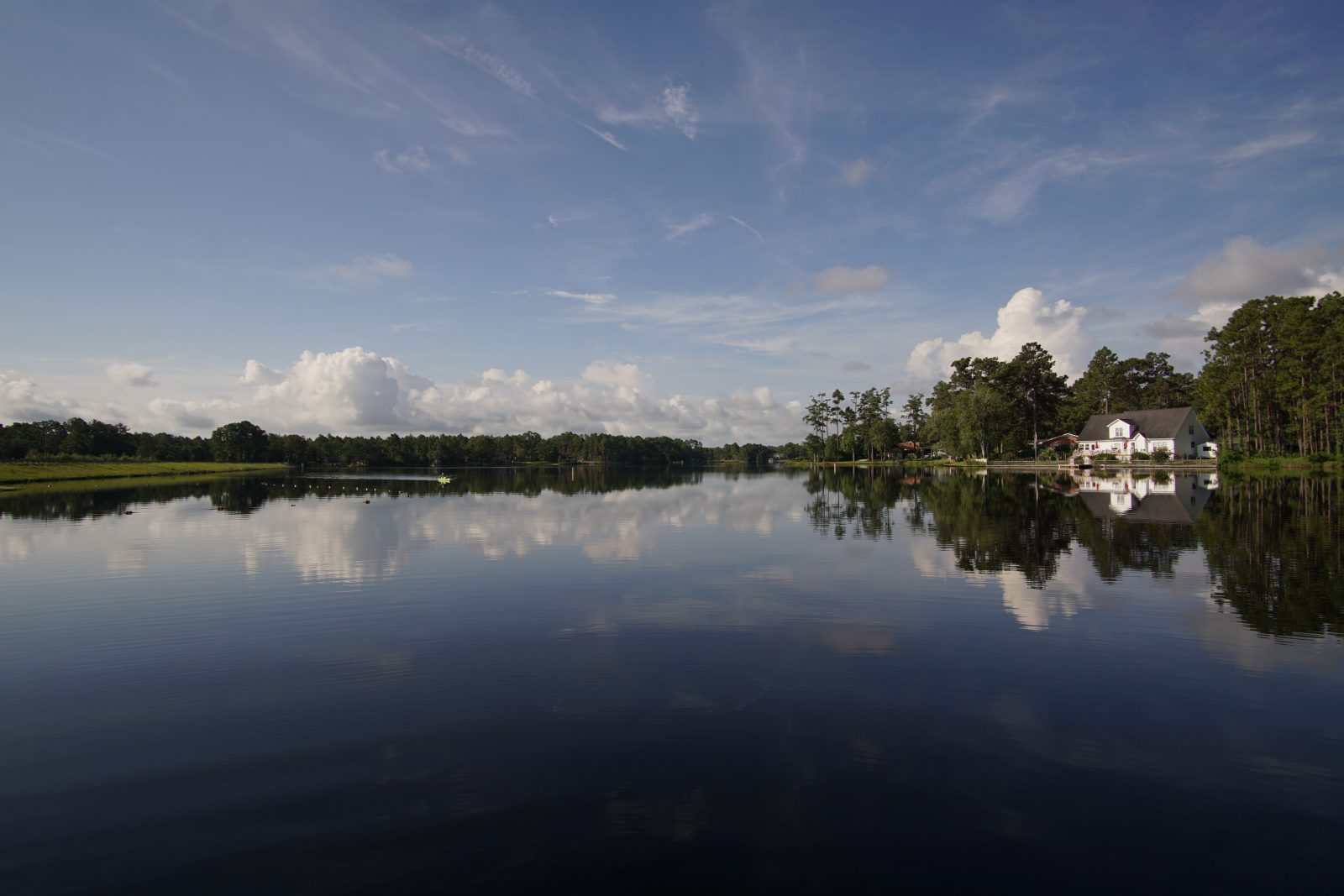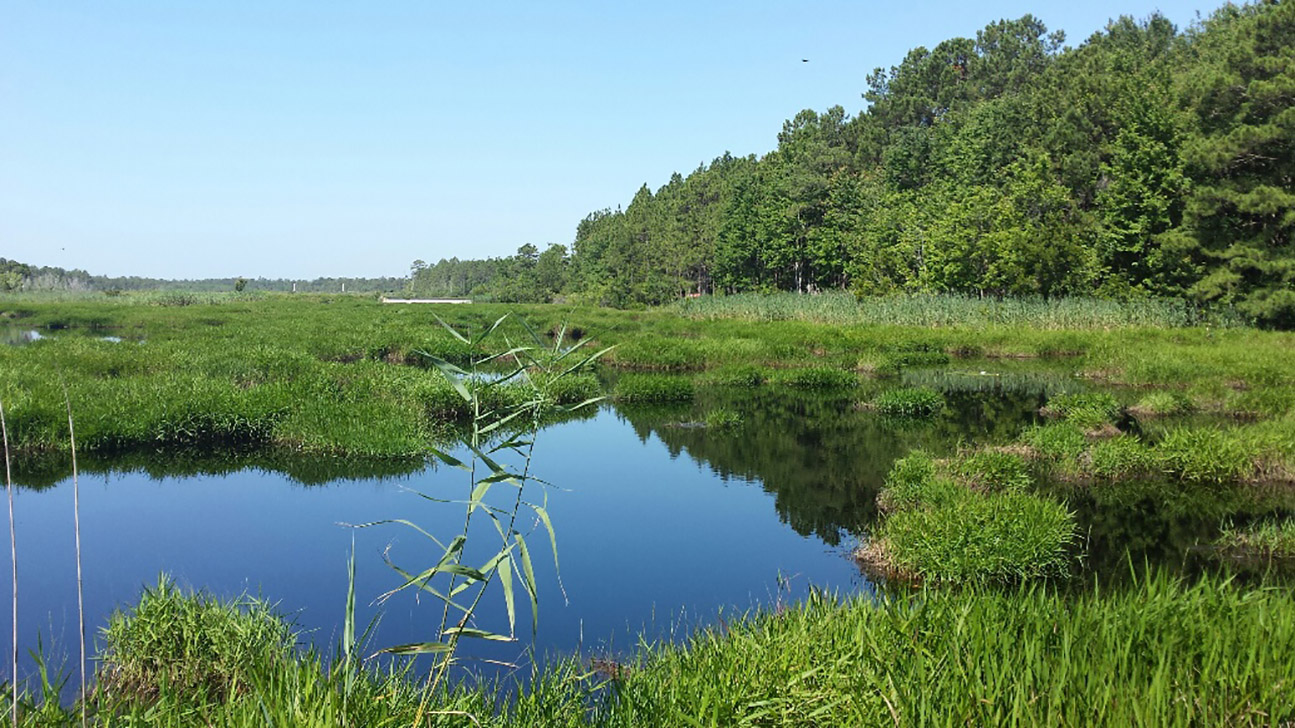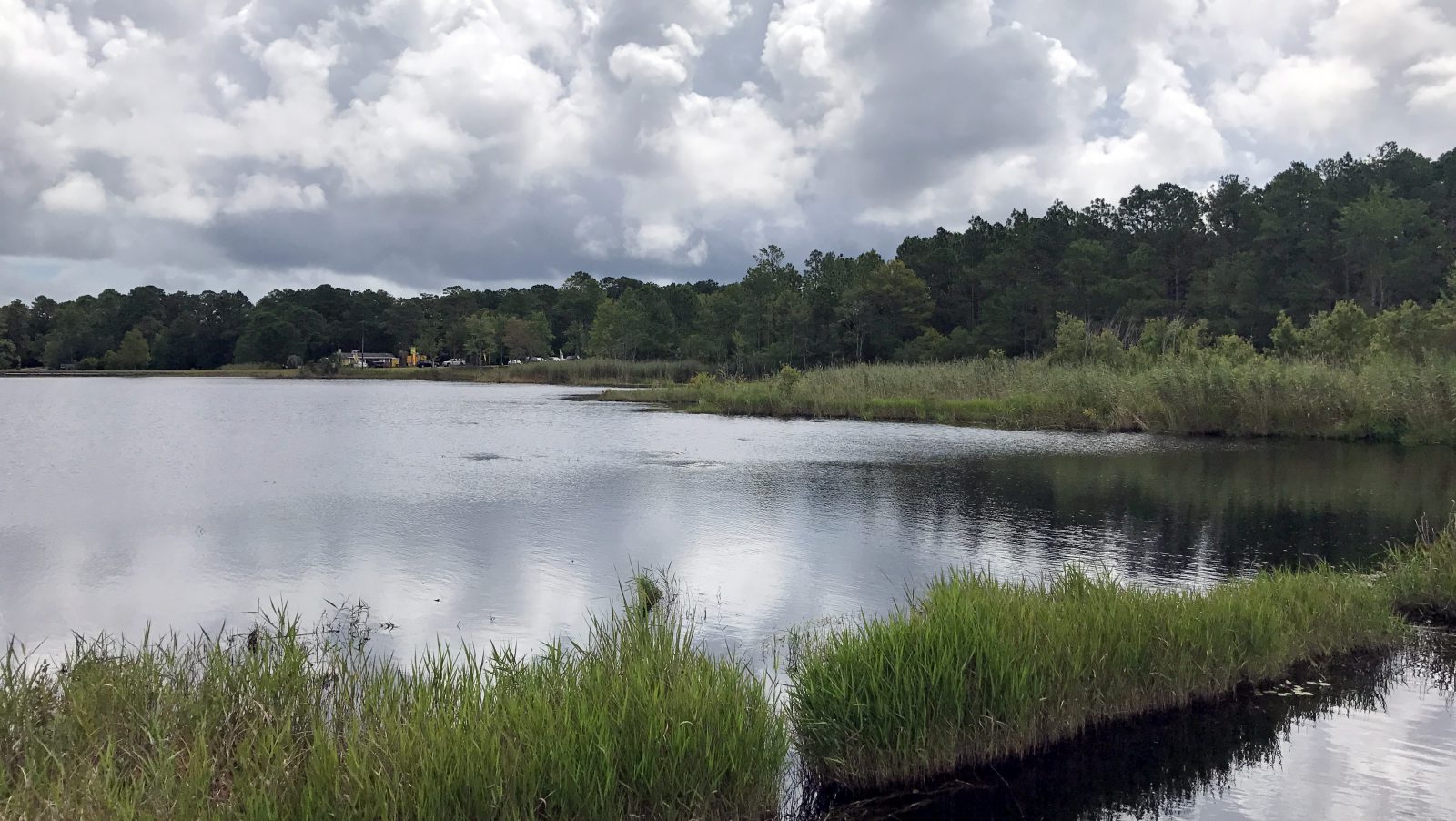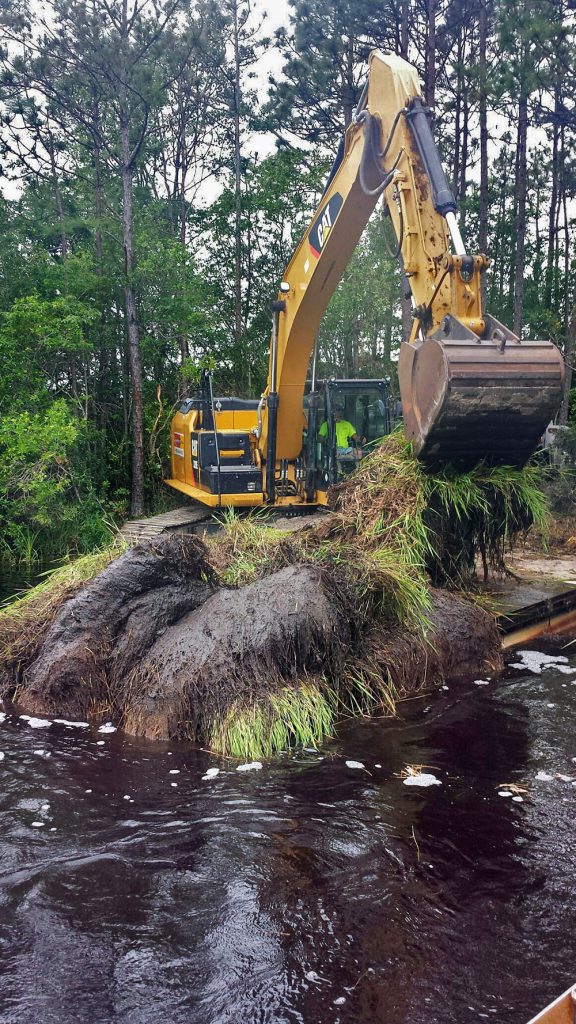
Site Description
Location: Boiling Spring Lakes, NC
This lake is a 350-acre waterbody located in the center of Boiling Spring Lakes, NC. The property is directly fed from North Lake to the north, which is fed by Spring Lake to the northeast. There are small additional brooks and streams that also flow into the waterbody. The lake is surrounded by heavy residential use, and it widely used for recreational activities.
- Hydro-raking Invasive Aquatic Weeds


Scope of Work
For a span of 10 years, this lake suffered from a Maidencane infestation that had continually encroached on an annual basis. This infestation was found in the mid-section of the lake between two causeways; with a small dam found along the southern causeway.
Maidencane is a native aquatic plant, however, it had grown to nuisance levels creating a monoculture over the waterbody in which the open water space was not visible. In sum, the Maidencane encroached within 4.3 acres of the approximately 8-acre area and was continually expanding. Due to the threatened water flow and decreasing aquatic habitat, removal efforts were deemed necessary.
Hydro-rake In Action

Project Description
The hydro-rake was the proposed management method for the specific removal objectives. The hydro-rake (see inset picture to the right) is essentially a floating backhoe powered by two hydraulic paddle wheels. The 12-foot hydraulic arm is equipped with a York rake attachment, which is used to rake the pond bottom and remove aquatic vegetation with attached root systems.
The hydro-rake was employed at the boat launch and worked for a total of 4 weeks to control the infestation. During operation, the material was placed on a floating push barge. The hydro-rake operator then pushed the barge to the shore where the excavator removed the Maidencane biomass and placed it into a tri-axle dump truck for transportation to the onsite dewatering location. At the end of the program, the Maidencane spanned over two miles along an access road to the Lake. An average of 150 cubic yards of material was removed per day.









